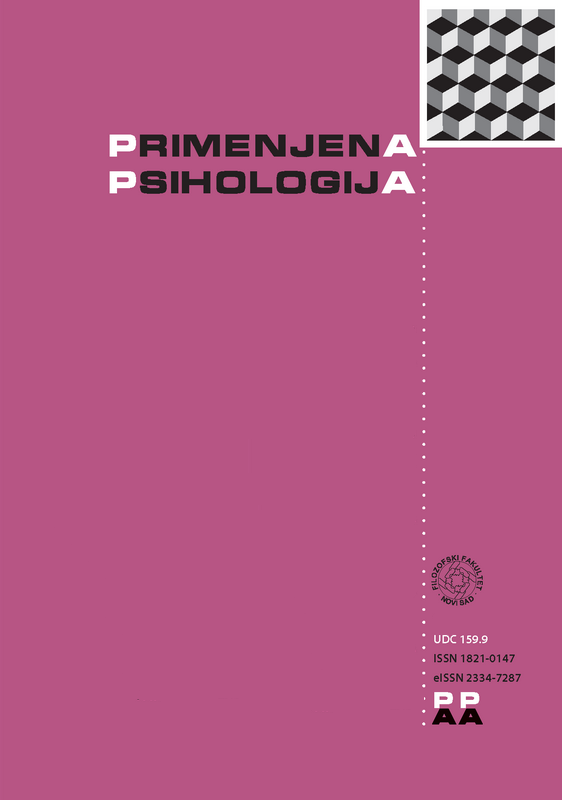THE ROLE OF SHAPE AND COLOUR IN RECOGNITION AND CLASSIFICATION OF FAMILIAR VISUAL OBJECTS
DOI:
https://doi.org/10.19090/pp.2016.3.333-352Keywords:
object recognition, diagnostic colour, classification, visual recognition, verification taskAbstract
There are two distinct approaches concerning the importance of colour and shape in visual recognition and object classification. The first group of theories emphasize the role of shape, while the second propose that the colour is equally important as shape. Hence, the latter group of theories segregate all objects into two categories: 1) HCD, for which colour and shape are equally important visual characteristics and 2) LCD, primary relying on shape. Our goal was to establish the impact of shape and colour in classification and recognition of visual objects. We wanted to determine whether there is a difference in shape and colour contribution when it comes to natural vs. man-made objects. Hence, we used food for our stimuli, given that in this category both natural and man-made objects are equally familiar and frequent, and both possess diagnostic colours. Our results strongly support theories that emphasize the importance of shape both for categorization and object recognition. It seems that colour only plays a role in recognition when shape is so deformed that it is essentially uninformative.
References
Baayen, R. H. (2013). LanguageR: Data sets and functions with Analyzing Linguistic Data: A practical introduction to statistics. R package version 1.4.1. Retrieved from: http//cran.r-project.org/web/packages/languageR/index.html
Barr, D. J. (2013). Random effects structure for testing interactions in linear mixed-effects models. Frontiers in psychology, 4, 328. doi:10.3389/fpsyg.2013.00328
Bates, D., Maechler, M., Bolker, B., Walker, S., Christiansen, R. H. B., Singmann, H., & Bin, D. (2013). Lme4: Linear mixed-effects models using s4 classes and methods [Computer software manual]. R package version 1.1-7. Retrieved from: http://cran.r-project.org/web/packages/lme4/index.html
Biederman, I. (1987). Recognition-by-components: A theory of human image understanding. Psychological Review, 94, 115–147. doi:10.1037/0033-295X.94.2.115
Biederman, I., & Bar, M. (1999). One-shot viewpoint invariance in matching novel objects. Vision Research, 39, 2885–2899. doi:10.1016/S0042-6989(98)00309-5
Biederman, I., & Gerhardstein, P. C. (1993). Recognizing depth-rotated objects: Evidence and conditions for three-dimensional viewpoint invariance. Journal of Experimental Psychology: Human Perception and Performance, 19, 1162–1182. doi:10.1037/0096-1523.19.6.1162
Biederman, I., & Ju, G. (1988). Surface vs. edge-based determinants of visual recognition. Cognitive Psychology, 20, 38–64. doi:10.1016/0010-0285(88)90024-2
Bramão, I., Reis, A., Petersson, K. M., & Faísca, L. (2011). The role of color information on object recognition: A review and meta-analysis. Acta psychologica, 138, 244–253. doi:10.1016/j.actpsy.2011.06.010
Cave, C. B., Bost, P. R., & Cobb, R. E. (1996). Effects of color and pattern on implicit and explicit picture memory. Journal of Experimental Psychology Learning Memory and Cognition, 22, 639–653. doi:10.1037/0278-7393.22.3.639
Grossberg, S., & Mingolla, E. (1985). Neural dynamics of form perception: Boundary completion, illusory figures, and neon color spreading. Psychological Review, 92, 173–211. doi:10.1037/0033-295X.92.2.173
Hagen, S., Vuong, Q. C., Scott, L. S., Curran, T., & Tanaka, J. W. (2014). The role of color in expert object recognition. Journal of Vision, 14, 9. doi:10.1167/14.9.9
Kuznetsova, A., Brockhoff, P. B, & Christiansen, R. H. B. (2014). LmerTest: Linear mixed-effects [Computer software manual]. R package version 2.0-20. Retrieved from: http://cran.r-project.org/web/packages/lme4/index.html
Landy, M. S., & Graham, N. (2004). Visual perception of texture. In L. M. Chalupa & J. S. Werner (Eds.), The Visual Neurosciences, Volume 2 (pp. 1106–1118). Cambridge: The MIT Press.
Lewis, D. E., Pearson, J., & Khuu, S. K. (2013). The color “fruit”: Object memories defined by color. PloS one, 8, e64960. doi:10.1167/13.9.1009
Li, A., & Zaidi, Q. (2001). Information limitations in perception of shape from texture. Vision Research, 41, 1519–1533. doi:10.1016/S0042-6989(01)00021-9
Marr, D. (1982). Vision. San Francisco: Freeman.
Ostergard, A. L., & Davidoff., I. B. (1985). Some effects of color on naming and recognition of objects. Journal of Experimental Psychology: Learning. Memorv, & Cognition, 11, 579–587. doi:10.1037/0278-7393.11.3.579
Radanović, J. i Vaci, N. (2013). Analiza vremena reakcije modelovanjem linearnih mešovitih efekata. Primenjena Psihologija, 6, 311–332. doi:10.19090/pp.2013.3.311-332
Tanaka J. W., & Presnell, L. M. (1999) Color diagnosticity in object recognition. Perception and Psychophycs, 61, 1140–1153. doi:10.3758/BF03207619
Tanaka J., Weiskopf, D., & Williams, P. (2001). The role of color high-level vision. Trends in Cognitive Science, 5, 211–215. doi: 10.1016/S1364-6613(00)01626-0
Therriault, D. J., Yaxley, R. H., & Zwaan, R. A. (2009). The role of color diagnosticity in object recognition and language comprehension. Cognitive Processing, 10, 335–342. doi:10.1007/s10339-009-0260-4
Ullman, S. (1984). Visual routines. Cognition, 18, 97–159. doi:10.1016/0010-0277(84)90023-4







